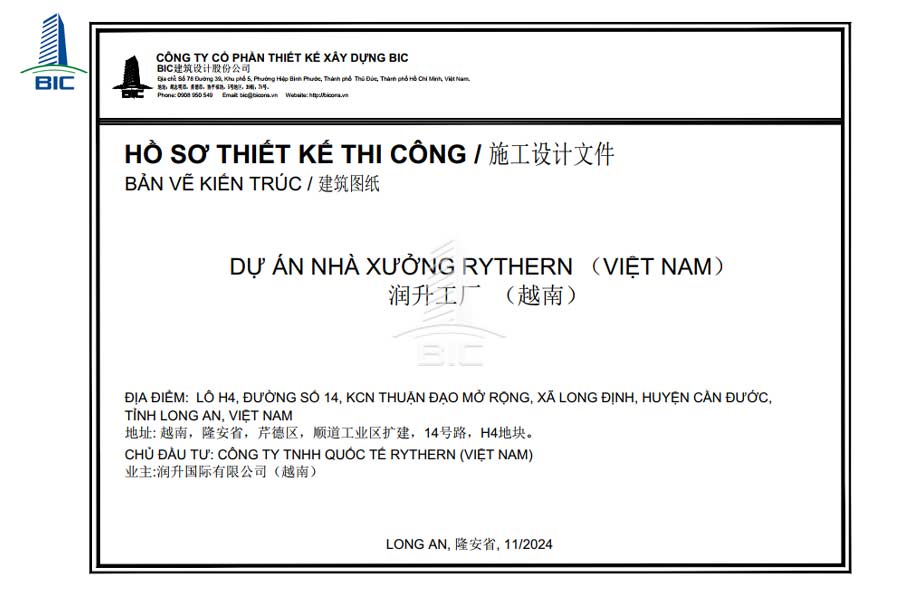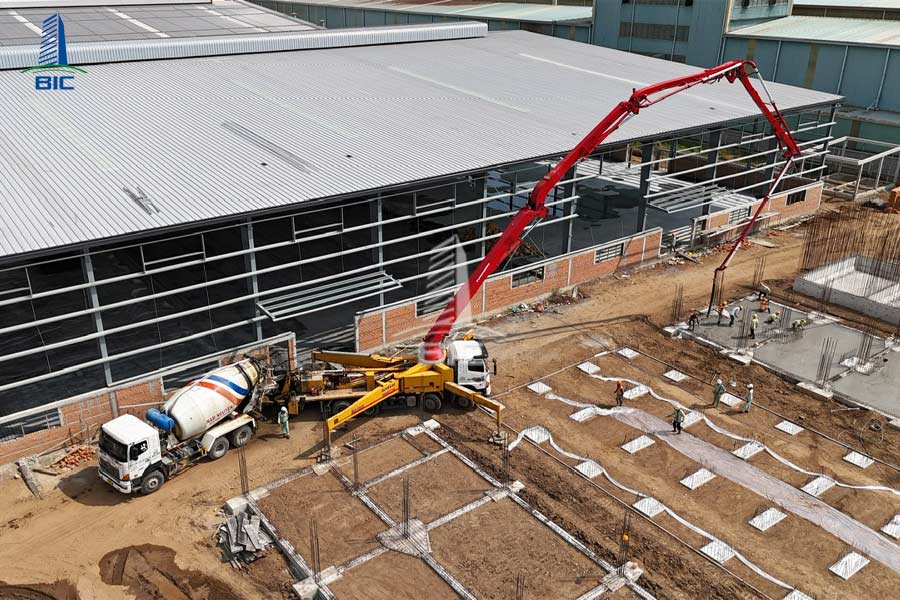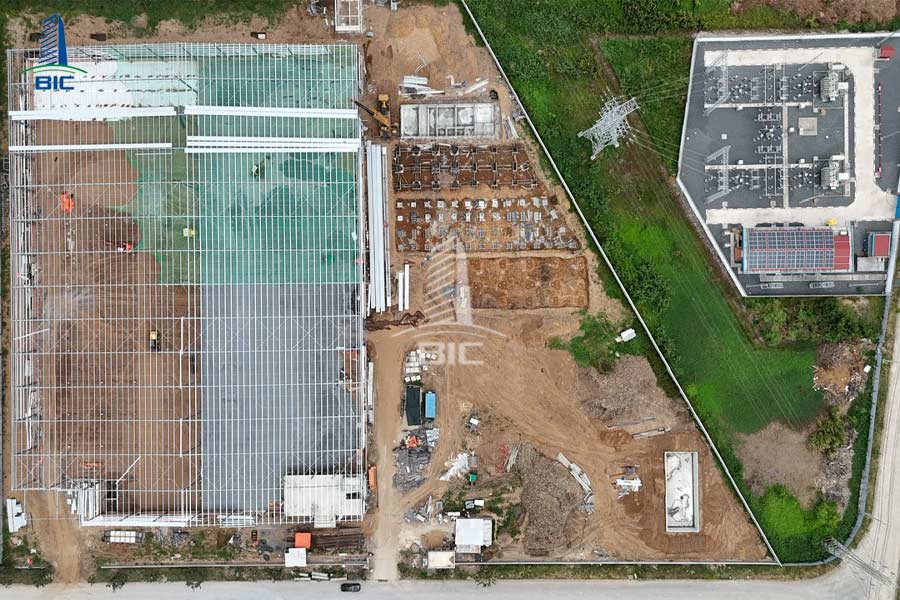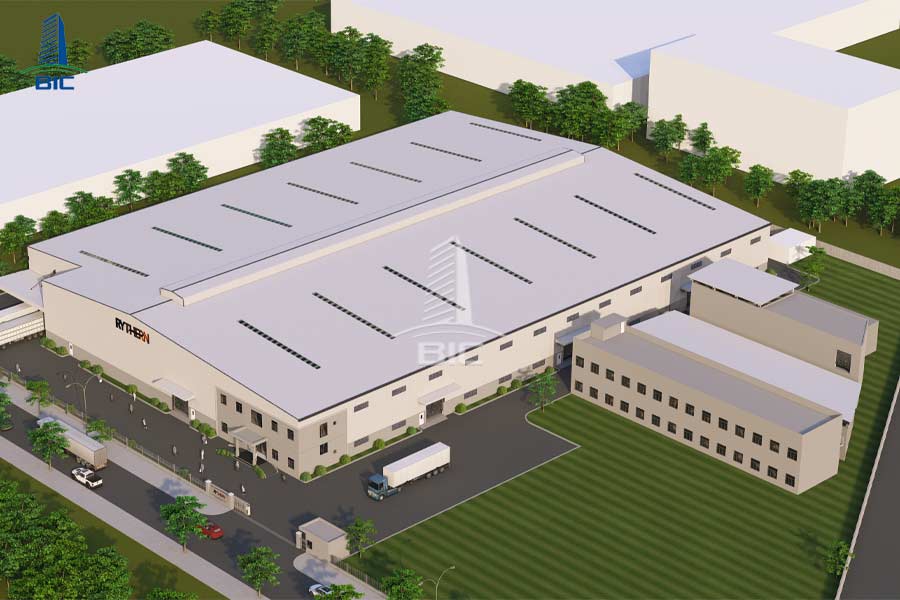
When starting a construction project, the first and most important step is choosing the right design contractor. A proper, optimized design drawing from the outset can significantly save construction costs, shorten completion time, and minimize future risks. However, with hundreds of design firms on the market, how can investors accurately assess the quality of a construction design contractor?
In this article, BIC will help you identify the key criteria to select the right design partner a true companion in building sustainable and efficient facilities.
Choosing the right construction design contractor is not only the first step toward a successful project but also a crucial factor affecting the entire timeline, budget, and long-term operational efficiency. Here are the reasons why investors cannot skip this evaluation process:
A factory design drawing that lacks practicality or coordination between disciplines such as architecture, structural engineering, MEP, and fire safety can cause serious issues during construction. From demolitions and mid-project modifications to unresolvable discrepancies, many problems stem from selecting the wrong design partner. That’s why it’s essential to carefully assess the contractor's technical expertise and real-world experience before signing a contract.

A well-prepared design helps optimize material usage, labor, and construction progress. On the other hand, vague or subpar drawings lead to frequent inquiries from construction teams, delays, and unplanned cost overruns. Just one error in a structural or plumbing drawing can lead to cascading problems. Evaluating the design contractor early on is the most effective way to protect your investment.
A professional design team not only draws accurate plans but also advises the best layout and flow for your type of facility from internal circulation and production lines to future expansion possibilities. This is particularly important for industrial buildings like factories, warehouses, and logistics centers. Good design translates into smooth operation, energy savings, and increased building lifespan, optimizing long-term operational budgets.
In reality, many investors especially first-time builders often fall into serious traps when selecting a design contractor. These mistakes may seem minor but can lead to major consequences like design errors, legal issues, cost overruns, and project delays. Here are the most frequent pitfalls:
This is the most common and dangerous mistake. Investors often collect quotes from 3–5 firms and pick the cheapest one. However, low prices often come with low quality:
- Rushed, copy-pasted drawings without real-site measurements.
- Lack of coordination among disciplines.
- No design warranty or construction support.
What seems cheap upfront may cost you significantly more during construction.

Many contractors market themselves as "professional" or “experienced with large projects,” but fail to provide specific portfolios or sample drawings when asked. Some even use images of third-party projects as their own, leading investors to overestimate their actual competence.
Many investors skim over design documents without evaluating their technical feasibility. As a result, the construction phase may face serious setbacks:
- Conflicting drawings between different disciplines.
- Missing or incorrect details in essential systems such as fire protection, drainage, or foundations.
If you lack technical expertise, hire an independent expert to review and assess the design documents before approval. This minor upfront investment can save major issues later.
Some investors rely solely on verbal agreements or informal communication (via email or messaging apps) without a formal contract. When disputes arise:
- There’s no legal basis to request corrections or compensation.
- Contractors can easily deny responsibility by citing “undefined scope.”
- The project is delayed, incurs legal costs, and affects the overall schedule.
Whether for design or construction, contracts must be detailed and transparent covering work scope, timeline, cost, mutual obligations, and handling of contingencies and warranty. This ensures quality control and protects all parties.
A subtle but common mistake is choosing a contractor based only on drawings and cost, without considering their ability to consult and support the project holistically.
A skilled contractor should not just “draw to spec” but act as a strategic partner who:
- Proposes optimized solutions aligned with your operations, budget, and growth plans.
- Flags legal, technical, or cost-related risks early.
- Collaborates flexibly during construction, making timely adjustments without avoiding responsibility.
Don’t settle for a contractor who just hands over the drawings and disappears. Choose a partner who stays involved until your facility is fully operational. This is what separates a mere service provider from a true partner.

Once you understand what mistakes to avoid, the next step is selecting a reputable, professional contractor aligned with your investment goals. Here are the key factors to consider:
Choose firms that have completed similar projects in size and technical scope.
For example:
- For food factories, choose designers experienced with GMP-certified facilities.
- For logistics warehouses, choose firms skilled in pre-engineered steel structures and warehouse flow optimization.
A reputable contractor will provide:
- A comprehensive capability profile.
- A list of completed projects (with images, drawings, and references).
- Valid practicing licenses and a qualified team of engineers and architects.
A trustworthy design firm will follow a clear process:
- Requirement intake, site survey, conceptual design, detailed development, and document handover.
- Set clear timelines for each phase.
- Sign a well-defined contract that covers responsibilities, warranty terms, and handling of adjustments.

Prioritize firms willing to support your project until handover:
- Assist in interpreting drawings and adjusting to field changes.
- Coordinate smoothly with construction teams.
- Advise on materials, structures, or legal hurdles (if any).
A partner mindset will save you time, cost, and mitigate risk.
If you want fewer intermediaries, better cost control, and faster progress, consider firms that offer turnkey design–build services. Benefits include:
- Designs aligned closely with practical construction realities.
- Singular accountability no blame-shifting.
- Optimized timeline and budget due to internal coordination.
Choosing the right design contractor not only ensures quality drawings but also affects your investment return, operational efficiency, and building lifespan. Invest wisely from the start, because one right decision can prevent many future problems.
If you are seeking a professional design partner with multidisciplinary experience in industrial construction, contact BIC. We’re ready to accompany you from the first draft to the moment your factory is fully operational.